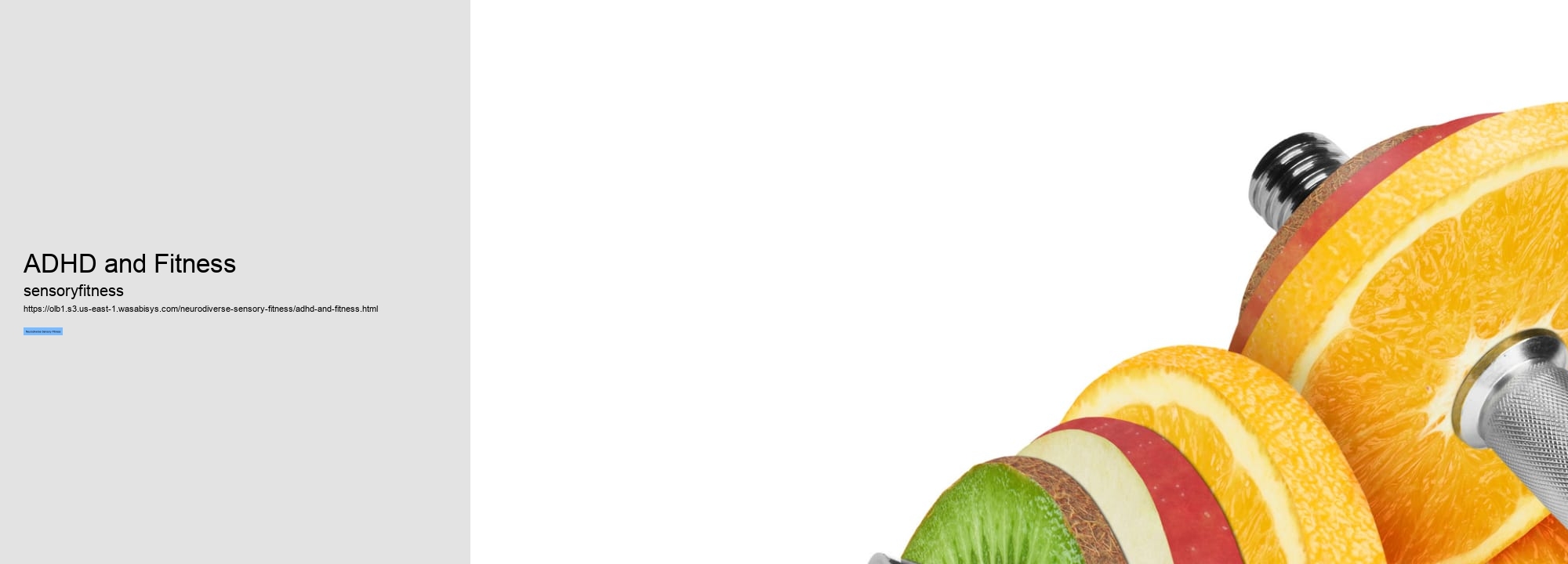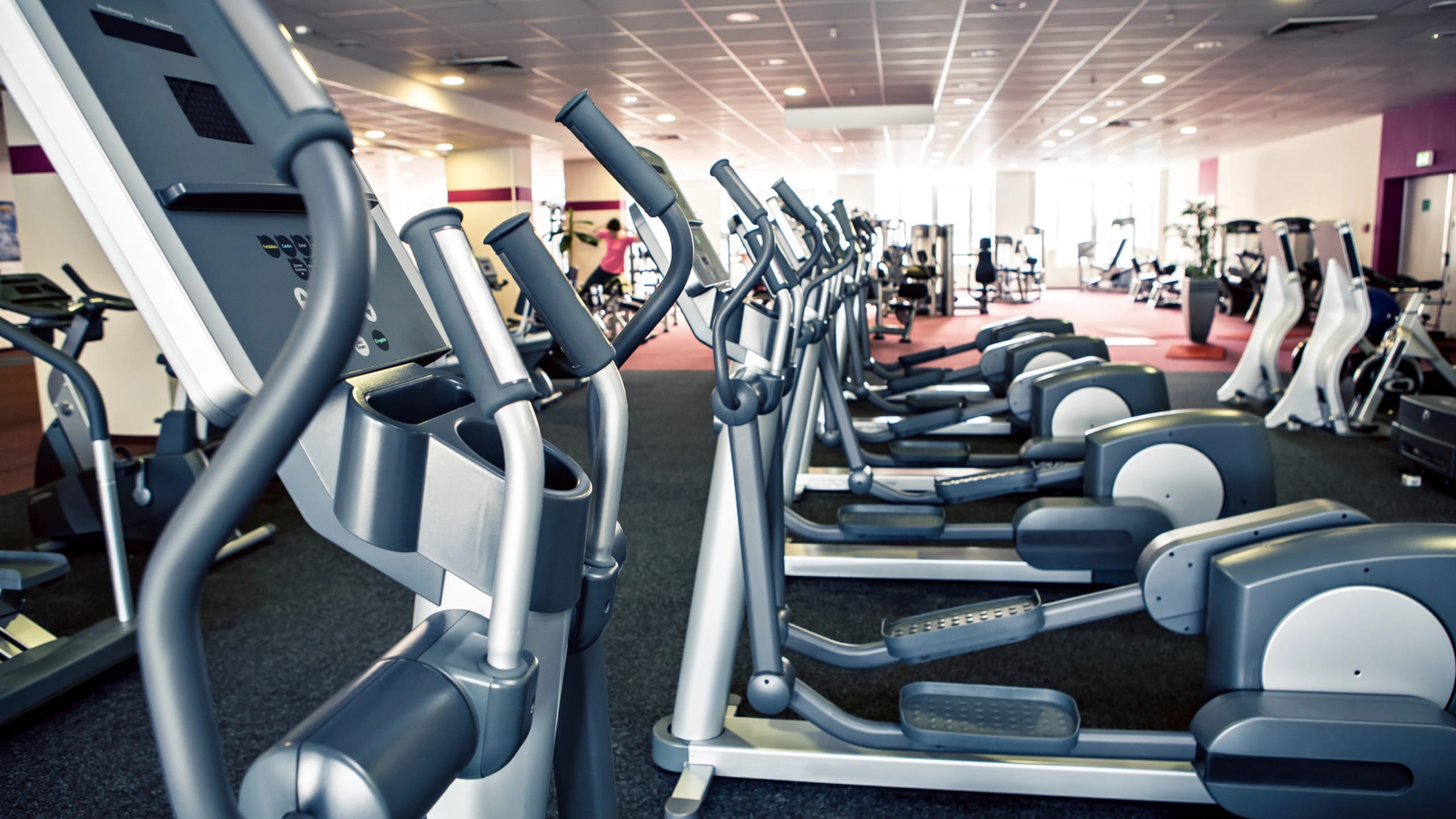

This can result in reduced anxiety levels, improved focus and attention, enhanced social interactions, and increased self-regulation skills. Furthermore, incorporating sensory integration techniques into daily routines can help individuals with neurodiverse conditions feel more comfortable and confident in their surroundings. Providing a sensory-friendly environment that caters to an individual's specific needs can greatly improve their quality of life and enable them to participate more fully in daily activities.
By implementing strategies that support efficient processing of sensory information, we can empower individuals with neurodivergent conditions to thrive and reach their full potential. What are the key components of a neurodiverse sensory fitness program?
This type of program focuses on incorporating sensory experiences into exercise routines in order to provide a more inclusive and effective workout for participants. There are several key components that make up a neurodiverse sensory fitness program.
This can include using different textures, colors, sounds, and scents to engage participants and enhance their overall experience. For example, incorporating soft mats for floor exercises or playing calming music during yoga sessions can help create a more comfortable and stimulating atmosphere.
Another crucial component of a neurodiverse sensory fitness program is individualized support and accommodations for participants with different sensory needs. This may involve providing alternative equipment or modified exercises to accommodate specific challenges or preferences. For example, individuals who are sensitive to loud noises may benefit from using noise-canceling headphones during group workouts. In addition, creating a safe and supportive space for participants is essential in a neurodiverse sensory fitness program. Trained instructors who understand the unique needs of individuals with diverse neurological abilities can help create an inclusive environment where all participants feel welcome and respected. Encouraging open communication and offering flexibility in programming can also contribute to a positive experience for everyone involved.
By incorporating sensory stimuli, providing individualized support, and fostering a supportive environment, these programs can help promote physical health and well-being for all participants regardless of their unique needs or challenges. What impact does neurodiverse sensory fitness have on cognitive function and daily living skills? Neurodiverse sensory fitness refers to the ability of individuals with neurodiverse conditions, such as autism or ADHD, to effectively process sensory information and regulate their responses to stimuli. This type of fitness plays a crucial role in supporting cognitive function and daily living skills for individuals with neurodiverse conditions. One significant impact that neurodiverse sensory fitness has on cognitive function is improved focus and attention.
Many individuals with neurodiverse conditions struggle with sensory overload, which can make it difficult for them to concentrate on tasks or stay engaged in activities. By developing sensory fitness through activities like deep pressure therapy or sensory integration exercises, individuals can learn how to better regulate their responses to sensory input and improve their ability to focus on tasks. Additionally, neurodiverse sensory fitness can also enhance processing speed and coordination, which are essential components of cognitive function. By engaging in activities that challenge the senses, such as balancing exercises or proprioceptive activities, individuals can strengthen neural pathways in the brain that support these functions. This can lead to improvements in information processing, decision-making, and motor skills.
For example, individuals who struggle with sensory sensitivities may find it challenging to tolerate certain textures or sounds in their surroundings. By engaging in activities that desensitize the senses or provide alternative forms of stimulation, individuals can become more adaptable and resilient in different environments. Furthermore, developing sensory fitness can also improve self-regulation skills and emotional resilience. Individuals who are able to effectively regulate their responses to sensory input are better equipped to manage stress, anxiety, and other emotional challenges that may arise throughout the day.
In conclusion, neurodiverse sensory fitness plays a critical role in supporting cognitive function and daily living skills for individuals with neurodiverse conditions. By improving focus, attention, processing speed, coordination, self-regulation skills, and emotional resilience through targeted sensory activities, individuals can enhance their overall quality of life and achieve greater success in both academic and personal endeavors. How to create a sensory-friendly fitness routine for neurodiverse individualsCreating a sensory-friendly fitness routine for neurodiverse individuals requires a thoughtful and inclusive approach that takes into consideration their unique needs and preferences. By understanding the specific sensory sensitivities and challenges faced by individuals with conditions such as autism, ADHD, or sensory processing disorder, we can tailor our fitness routines to provide a positive and supportive environment for everyone to thrive.


One important aspect to consider when designing a sensory-friendly fitness routine is the environment in which the activities take place. This may involve selecting a quiet and calm space free from excessive noise or distractions, providing ample natural light, and ensuring that the temperature is comfortable for all participants. Additionally, it can be helpful to incorporate visual cues such as pictures or diagrams to help guide individuals through each exercise.
For example, incorporating activities that involve rhythmic movements or deep pressure input can help individuals regulate their sensory systems and feel more grounded during exercise. Additionally, offering options for both individual and group activities can cater to different preferences and comfort levels.
Using simple language, breaking down tasks into manageable steps, and offering encouragement and reinforcement can help individuals feel confident in their abilities and stay motivated throughout the workout. It is also important to allow for breaks as needed and respect individual boundaries when it comes to physical contact or personal space.
By taking the time to understand each individual's unique needs and preferences, we can design an inclusive environment where everyone feels welcome and supported in their journey towards better health and well-being. Through patience, communication, and collaboration with professionals who specialize in working with neurodiverse populations, we can create a safe space where all individuals can thrive physically, mentally, emotionally while enjoying the benefits of regular physical activity.
How to incorporate sensory activities into your workout for neurodiverse individualsWhen it comes to incorporating sensory activities into workouts for neurodiverse individuals, there are many strategies that can be utilized to enhance the overall exercise experience. Sensory activities involve engaging the senses in various ways to promote relaxation, focus, and stimulation during physical activity. One way to incorporate sensory activities into workouts is by utilizing different textures and materials.
This can help individuals with sensory processing issues feel more grounded and engaged in their workout. Another effective strategy is incorporating music or sound into the workout routine.


Music has been shown to have a powerful impact on mood and motivation during exercise. Neurodiverse individuals may benefit from choosing music that is calming or energizing based on their individual preferences. Visual stimuli can also play a key role in enhancing sensory experiences during workouts.
In addition to these sensory strategies, mindfulness techniques such as deep breathing exercises or guided imagery can be helpful for promoting relaxation and reducing stress during physical activity. These techniques can help neurodiverse individuals stay present and connected to their bodies while exercising.
By utilizing a variety of sensory strategies such as textures, music, visuals, and mindfulness techniques, individuals can create a more personalized and engaging workout routine that meets their unique needs. How to tailor fitness programs to accommodate different sensory needs in neurodiverse individualsWhen it comes to creating fitness programs for neurodiverse individuals, it is important to consider their unique sensory needs.
By tailoring fitness programs to accommodate these sensory needs, we can create an inclusive and supportive environment that promotes physical health and well-being. One key consideration when designing fitness programs for neurodiverse individuals is to provide options for different sensory preferences.
For example, some individuals may be sensitive to loud noises or bright lights, while others may seek out deep pressure or proprioceptive input. By offering a variety of equipment and exercises that cater to these preferences, we can ensure that everyone feels comfortable and engaged during their workout. In addition to sensory preferences, it is also important to consider individual differences in motor skills and coordination. Some neurodiverse individuals may have challenges with balance or coordination, which can impact their ability to participate in certain types of exercises.
Another important aspect of accommodating sensory needs in neurodiverse individuals is creating a safe and predictable environment. This may involve setting clear expectations for behavior, providing visual schedules or cues, and offering opportunities for breaks or downtime as needed. By establishing a routine and structure that supports each individual's sensory needs, we can help them feel more comfortable and confident in their fitness program.
If you suspect you may be autistic, seeking an evaluation from a qualified professional such as a psychologist or psychiatrist can provide clarity and guidance.
The five most important components of fitness are cardiovascular endurance, muscular strength, muscular endurance, flexibility, and body composition.
The four objectives of physical fitness typically include improving cardiovascular endurance, muscular strength, flexibility, and body composition.